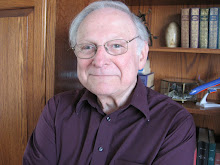The New York Times wrote recently of emoticons and emojis, using those two terms more or less interchangeably. But, in fact, they are quite different. An emoticon, a portmanteau word formed from emotion and icon, and pronounced ee-MOTE-uh-con, is a symbol composed of punctuation marks, letters, or numbers, in a text-only document, to indicate an emotional condition. Usually they must be read sideways. This is an emoticon indicating happiness :-). Others may indicate unhappiness :-( or alarm :-o or humor ;-).
The person most often credited as the first to use emoticons in this sense is a computer scientist named Scott Fahlman at Carnegie Mellon University in 1982.
Earlier prototypes, however, can be found. The American humor magazine Puck published these examples created by a type-setter in 1881:
Some people think they have found an even earlier example in a New York Times transcript of a speech by Abraham Lincoln in 1862. What might be an emoticon representing amusement appears in the fourth line, after “applause and laughter.” Others insist this is merely a typographical error.
A kind of shorthand emoticon was designed in ten minutes in 1963 by an artist named Harvey Ball as a morale-building device for employees of the State Mutual Life Insurance Company. Ball was paid $45 for inventing the “smiley face” that is now ubiquitous.
An emoji, pronounced ee-MO-jee, is a Japanese word that means “picture character.” It is a more elaborate design that can represent any idea, object, or cultural meme. The first emoji was designed around 1998 by Shigetaka Kurita, an employee of NTT DoCoMo, a Japanese communications company. Since then, many different organizations have designed their own emojis for use in communications. Here are samples representing a dancer, from Apple, Google, and Twitter:
The Bard of Buffalo Bayou is working on an emoji to represent him and his work; so far it’s just a big amorphous blob.
If I were asked to vote upon
My favorite emoticon,
I’m sure that I would think most highly
Of a face that’s slyly smiley.
Some days, though, are not so nice,
When smiley faces won’t suffice,
Grinning like some elf or brownie:
Then
I need a face that’s frowny.





No comments:
Post a Comment